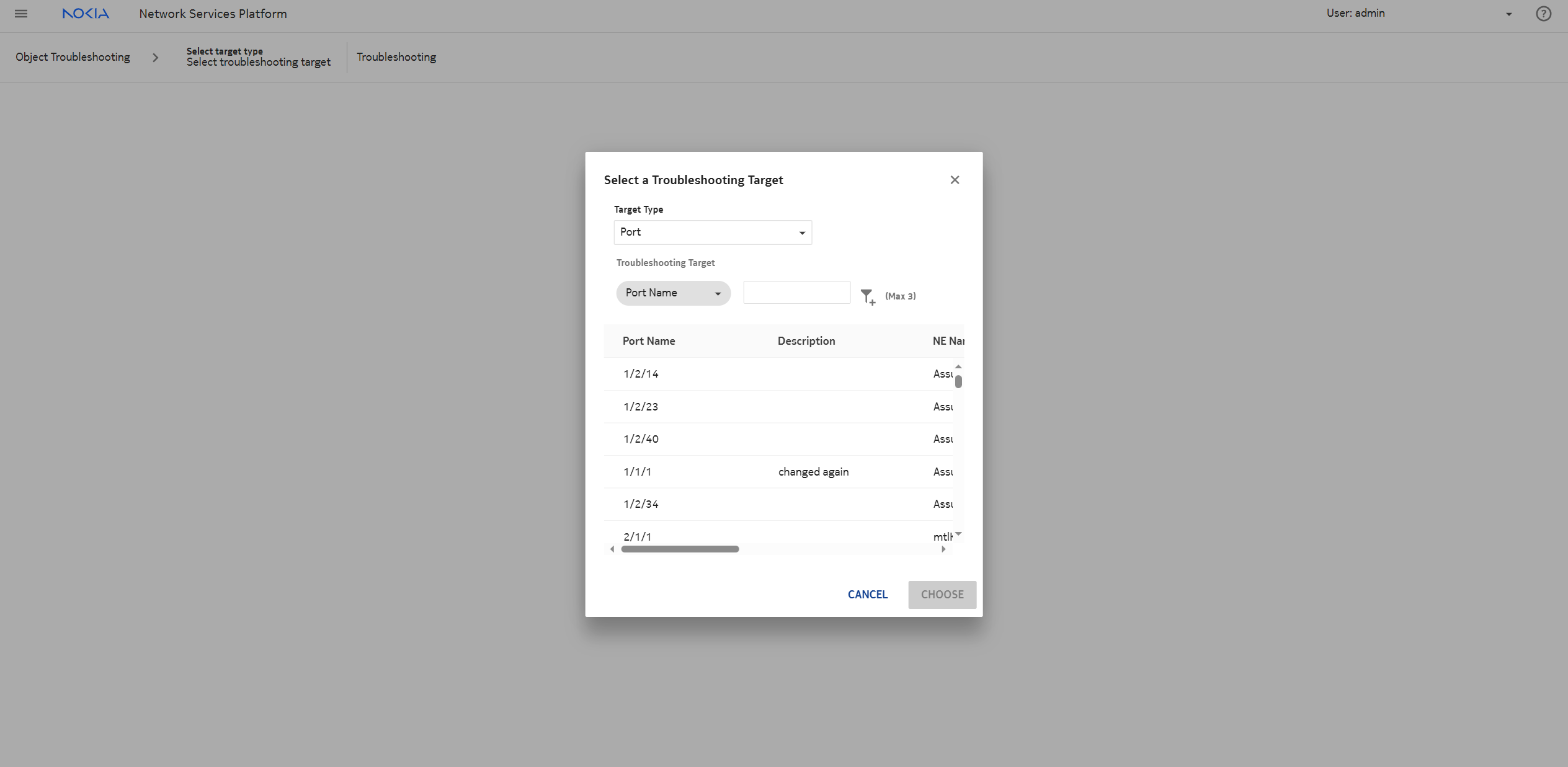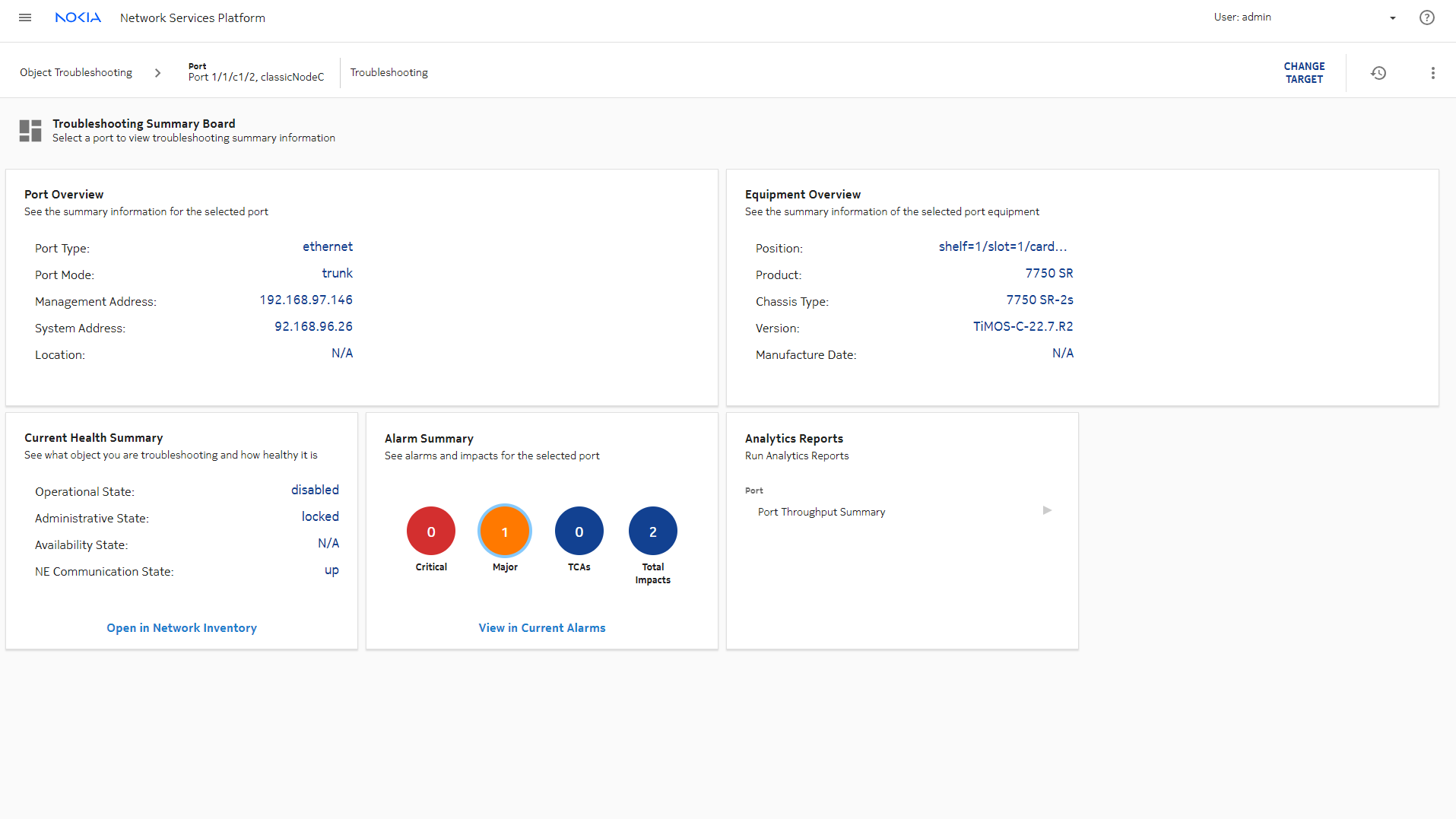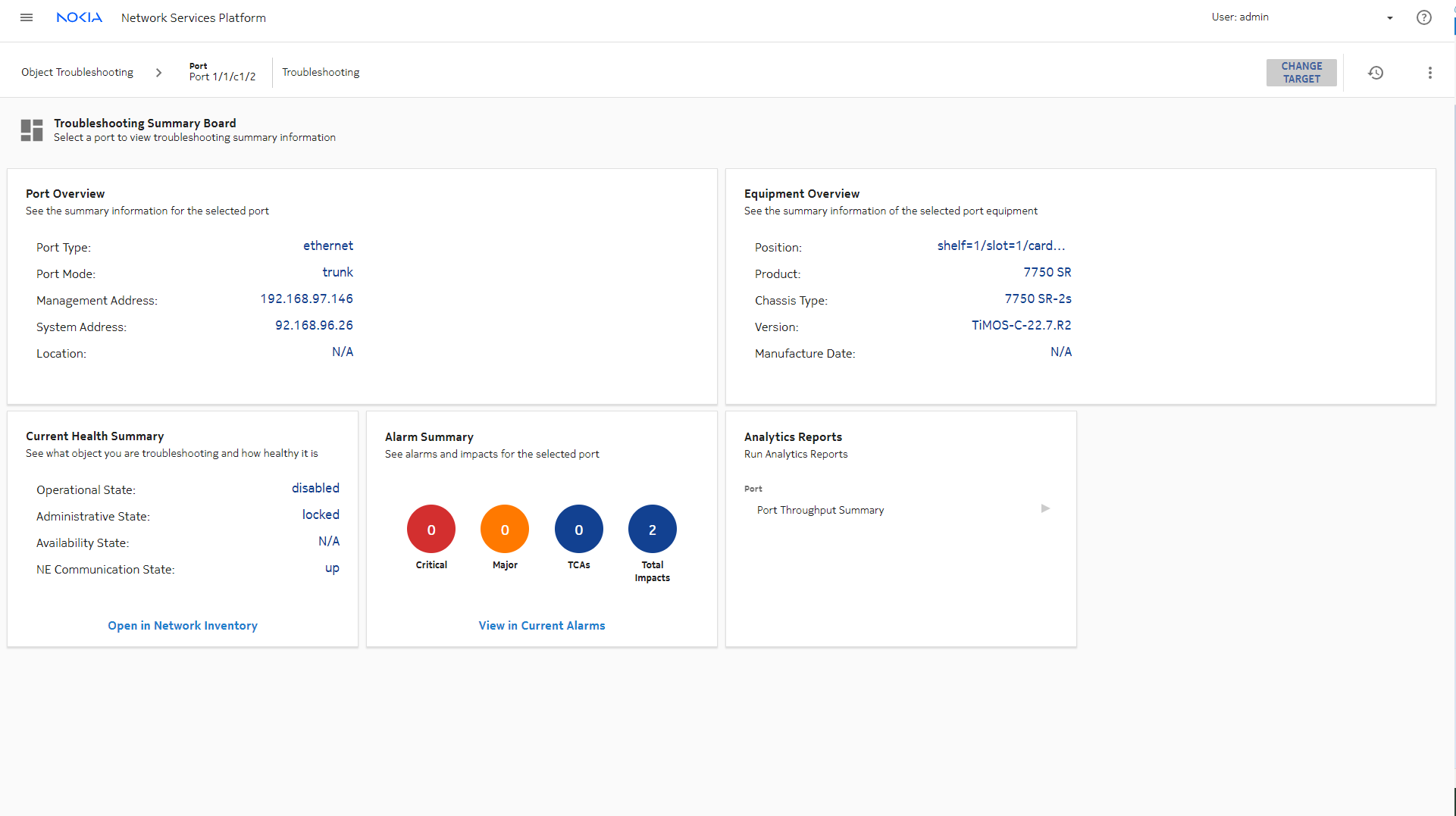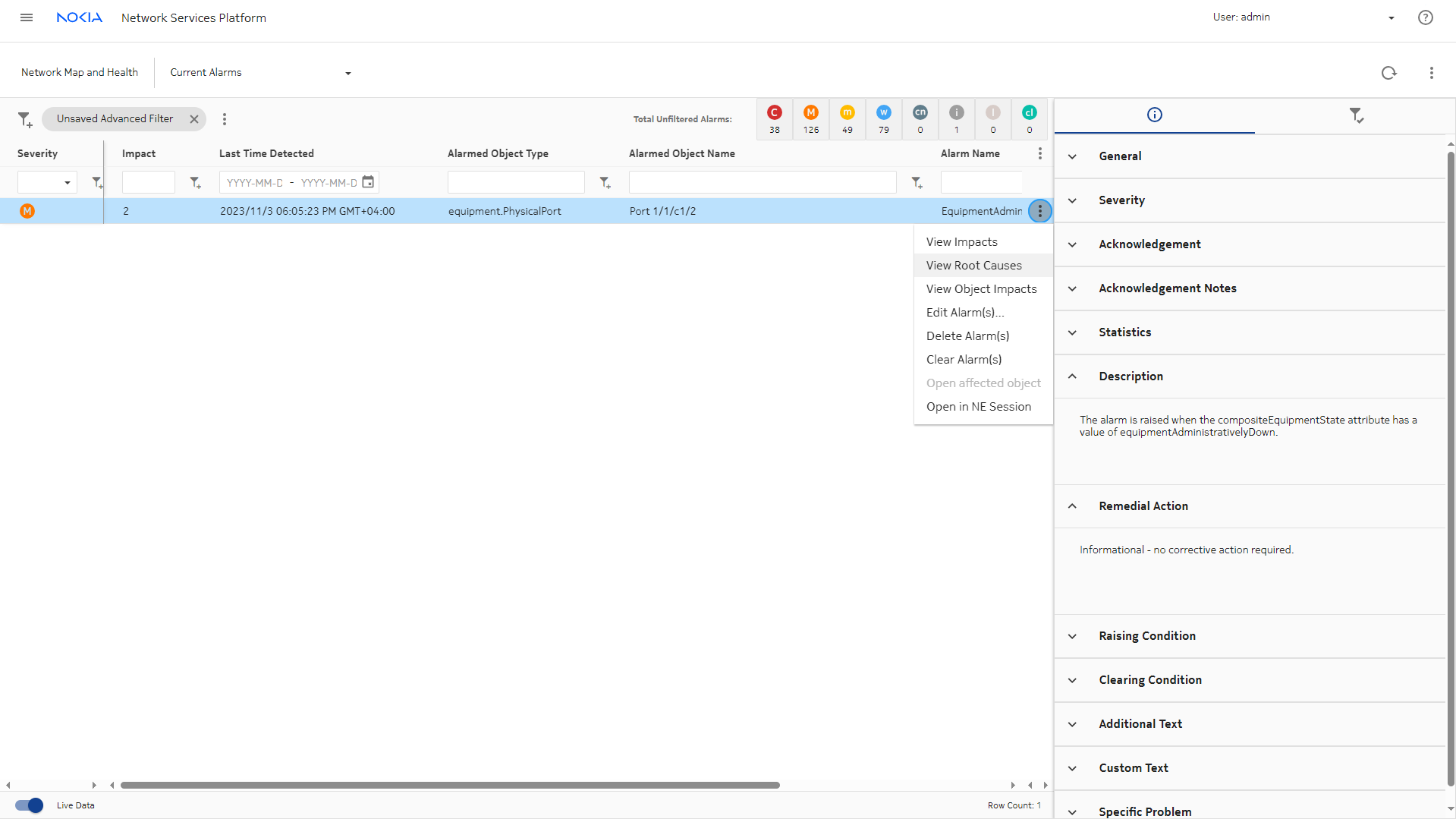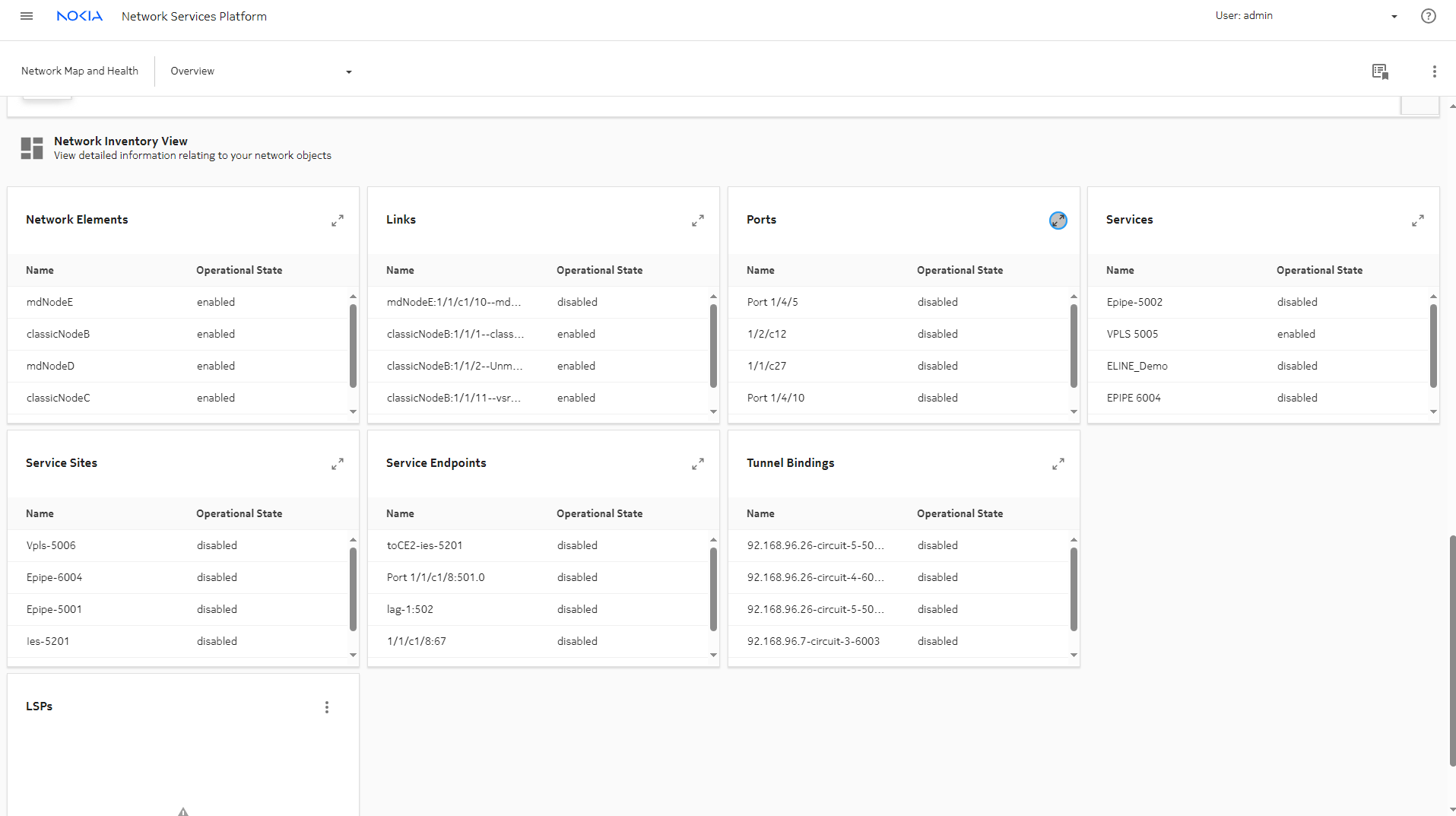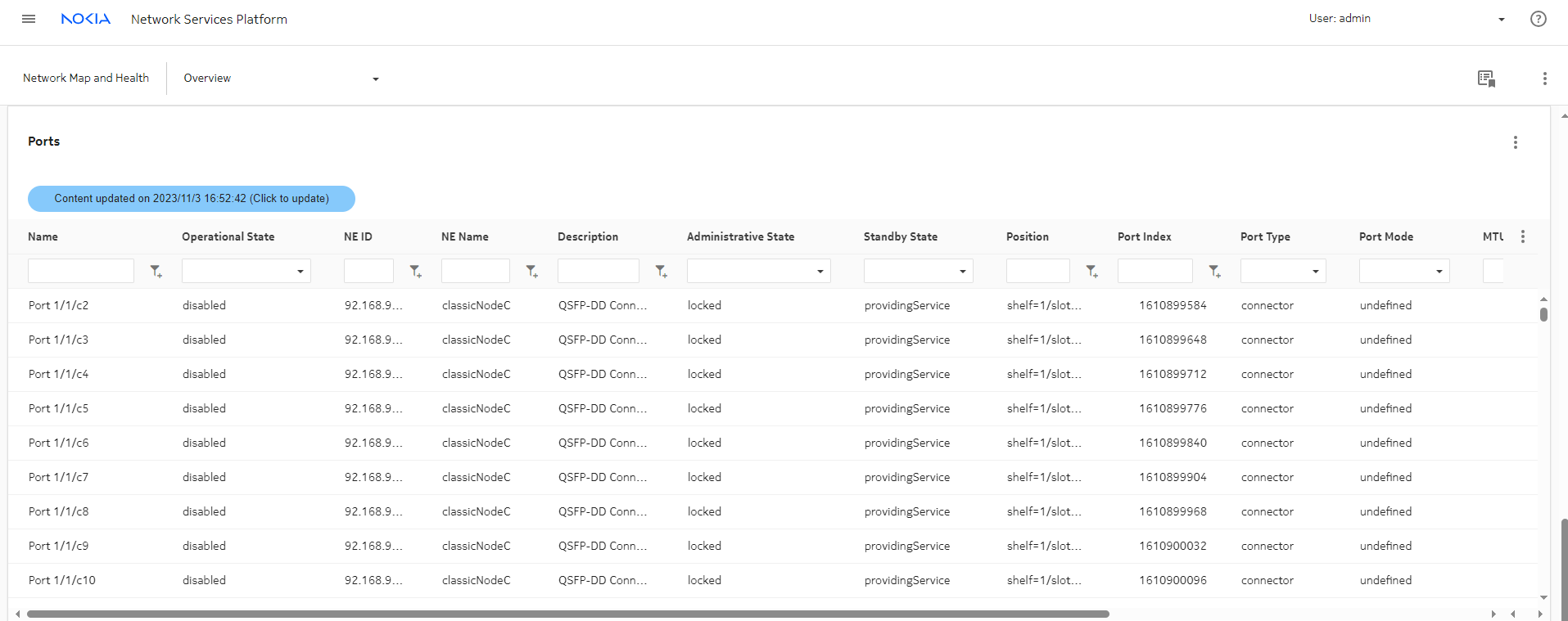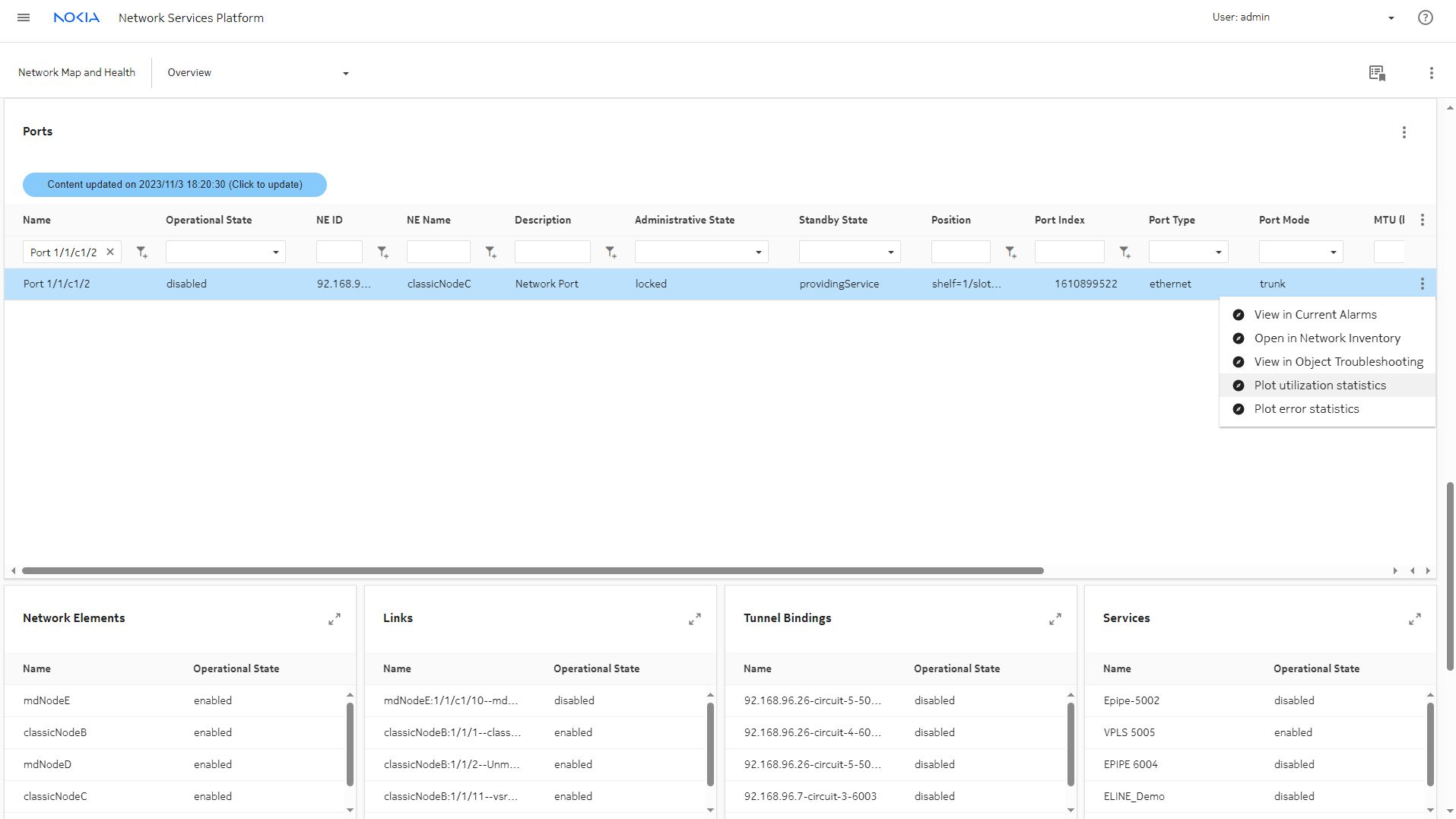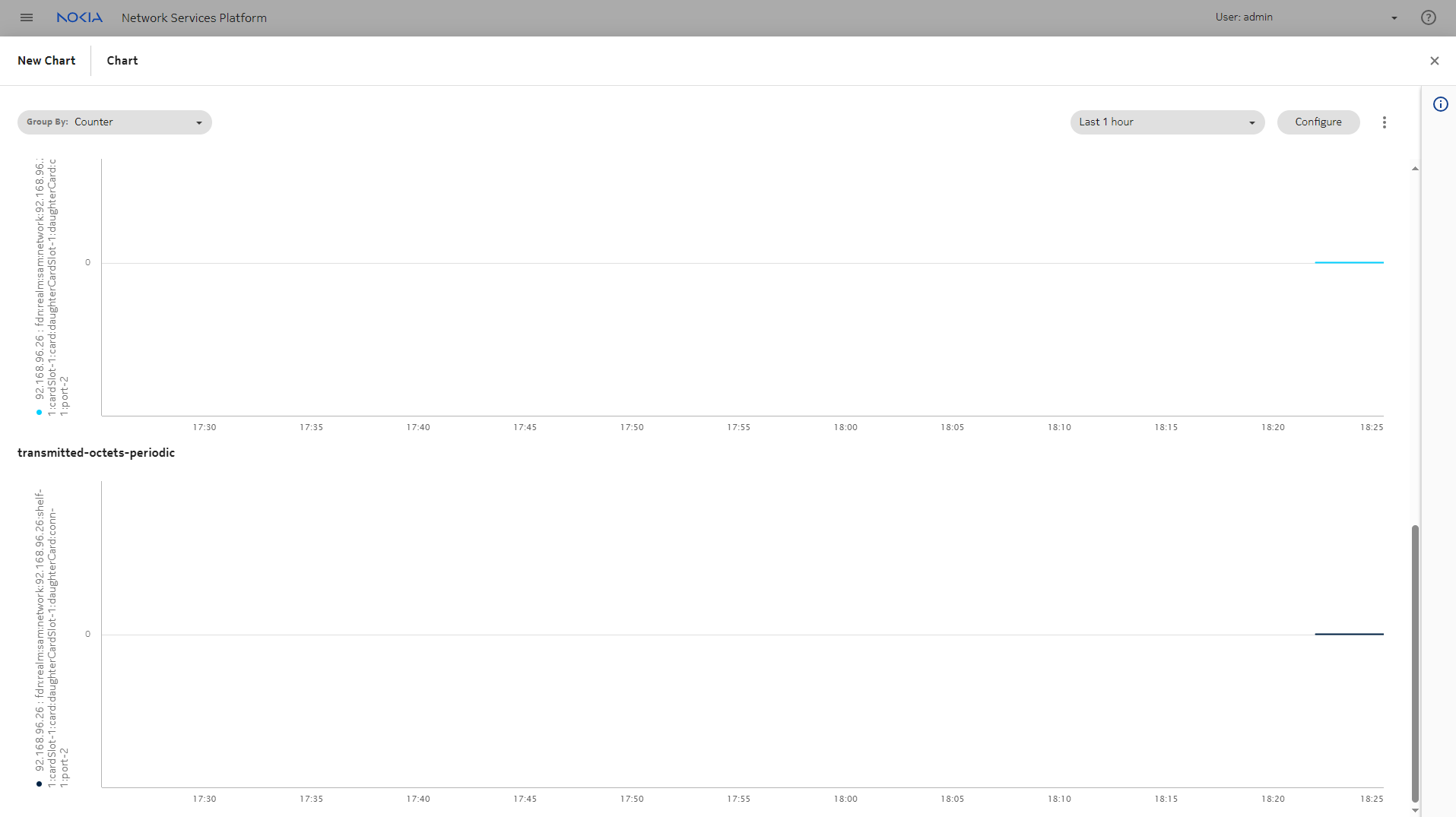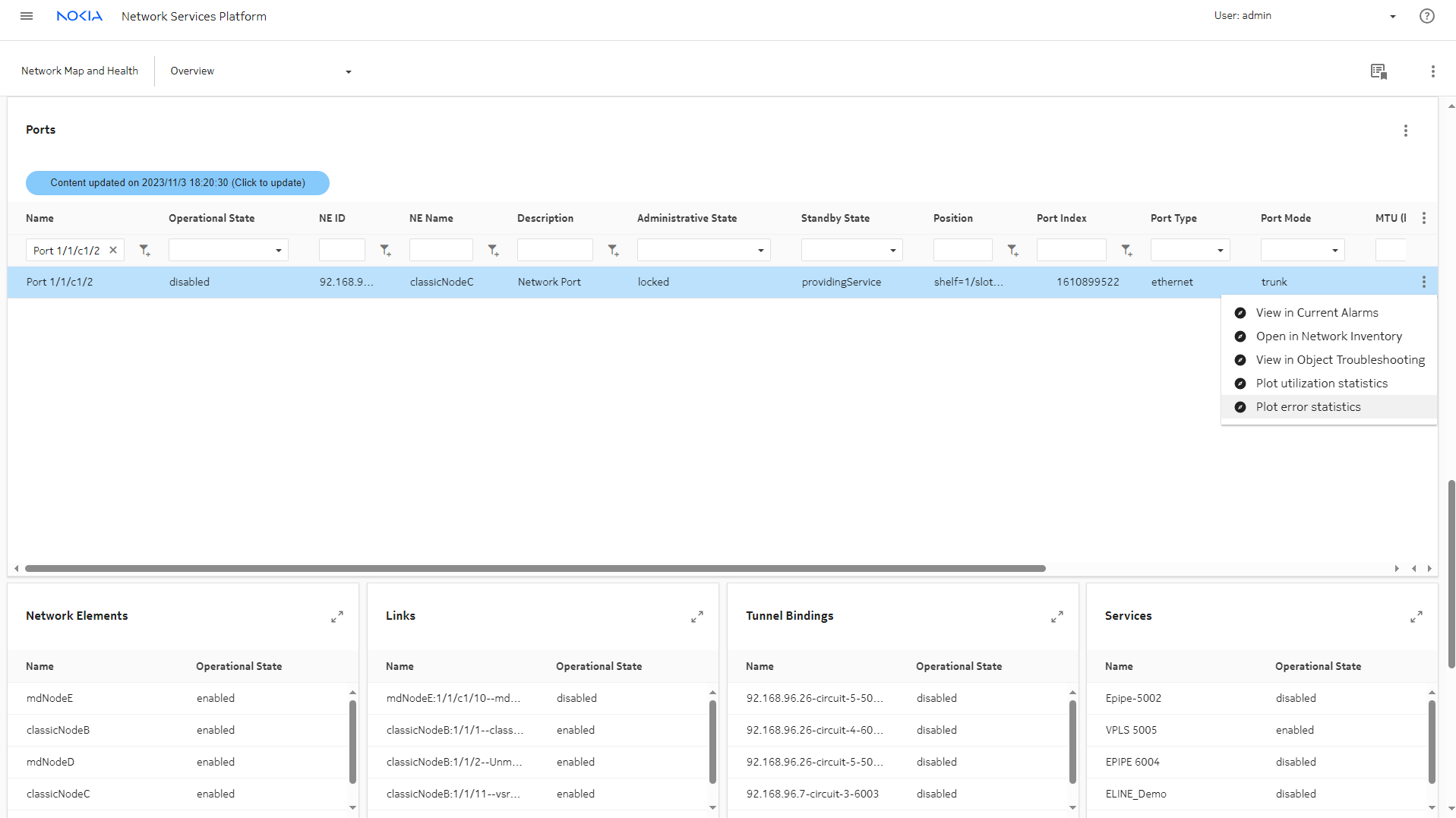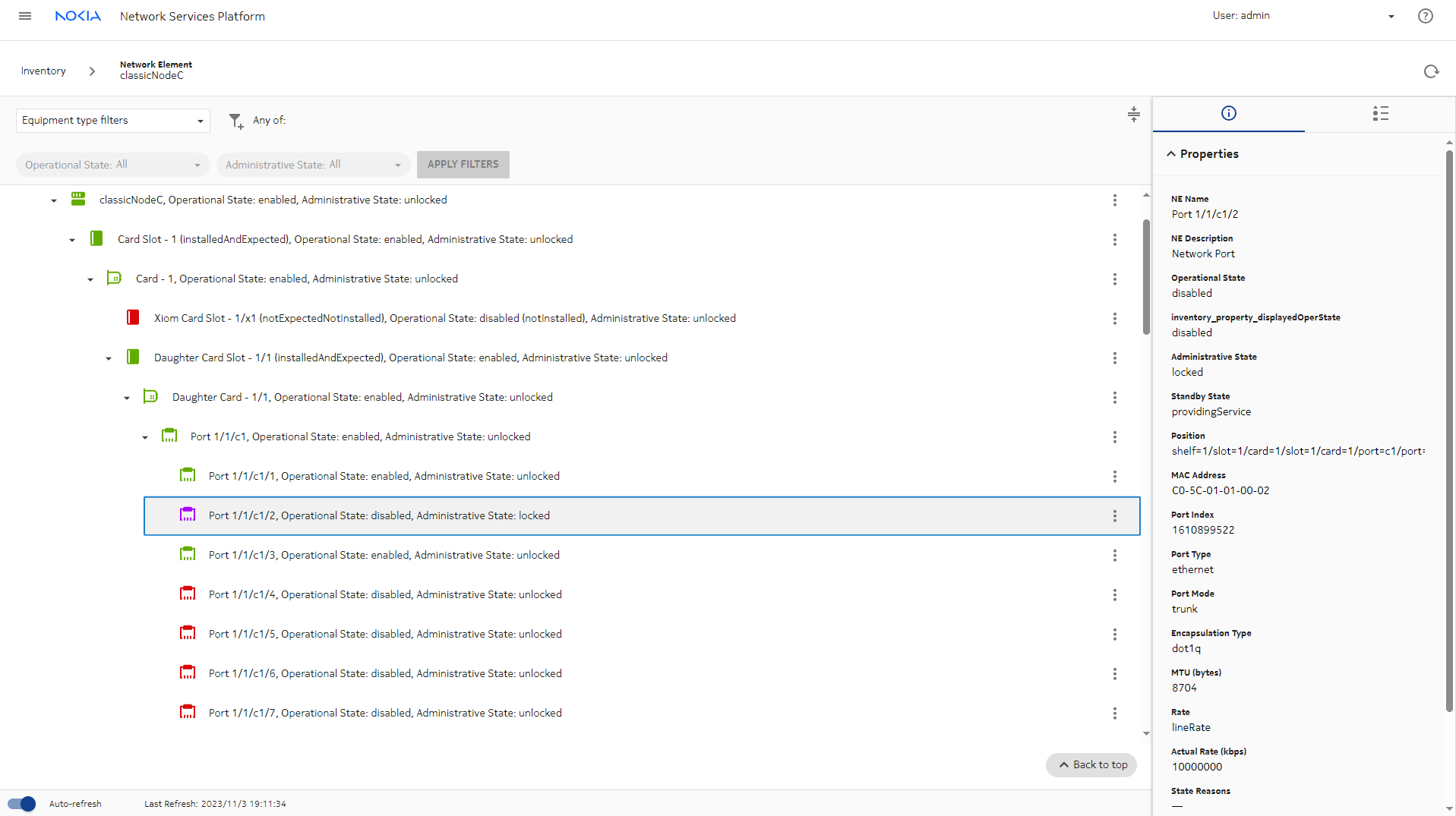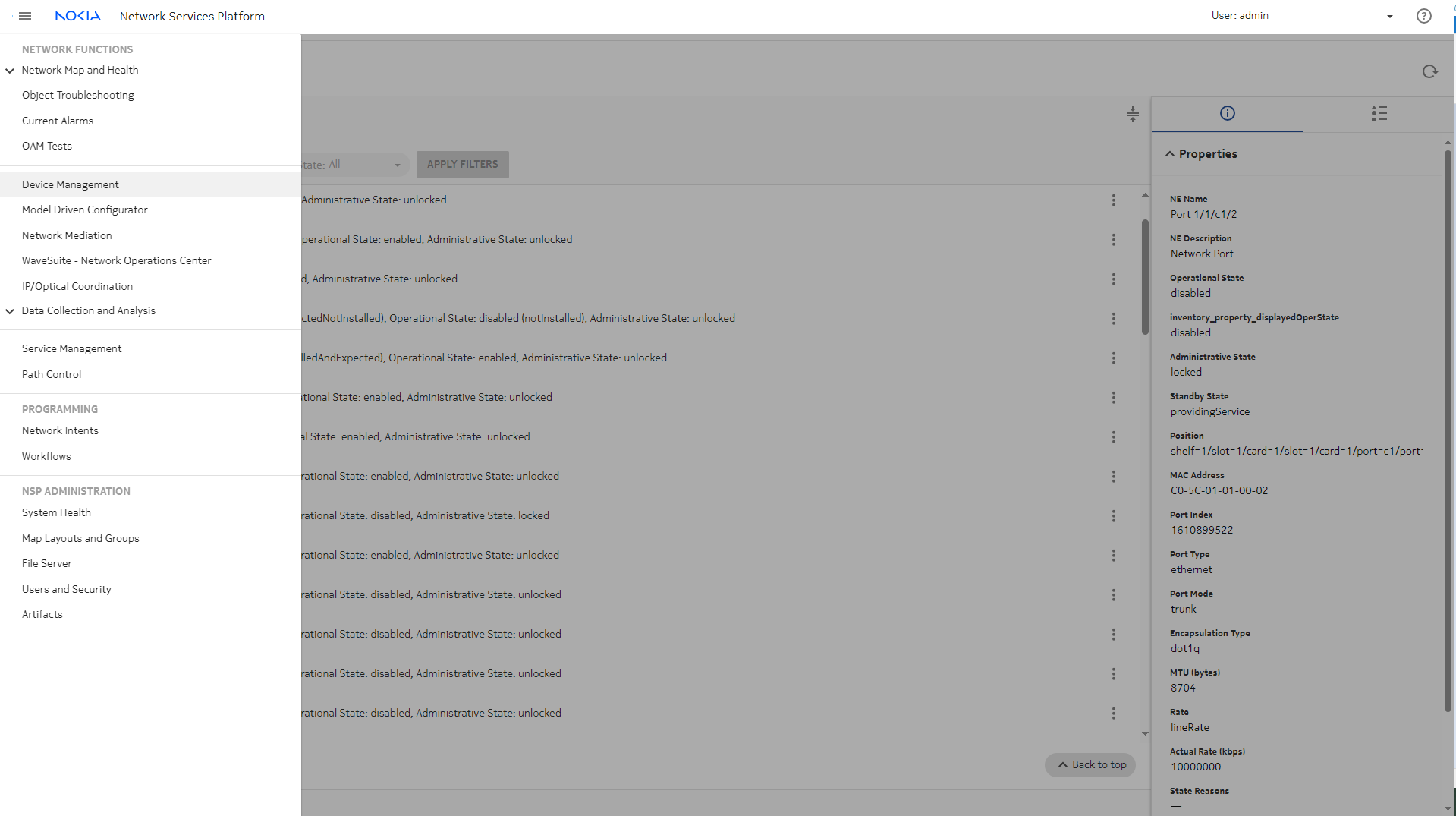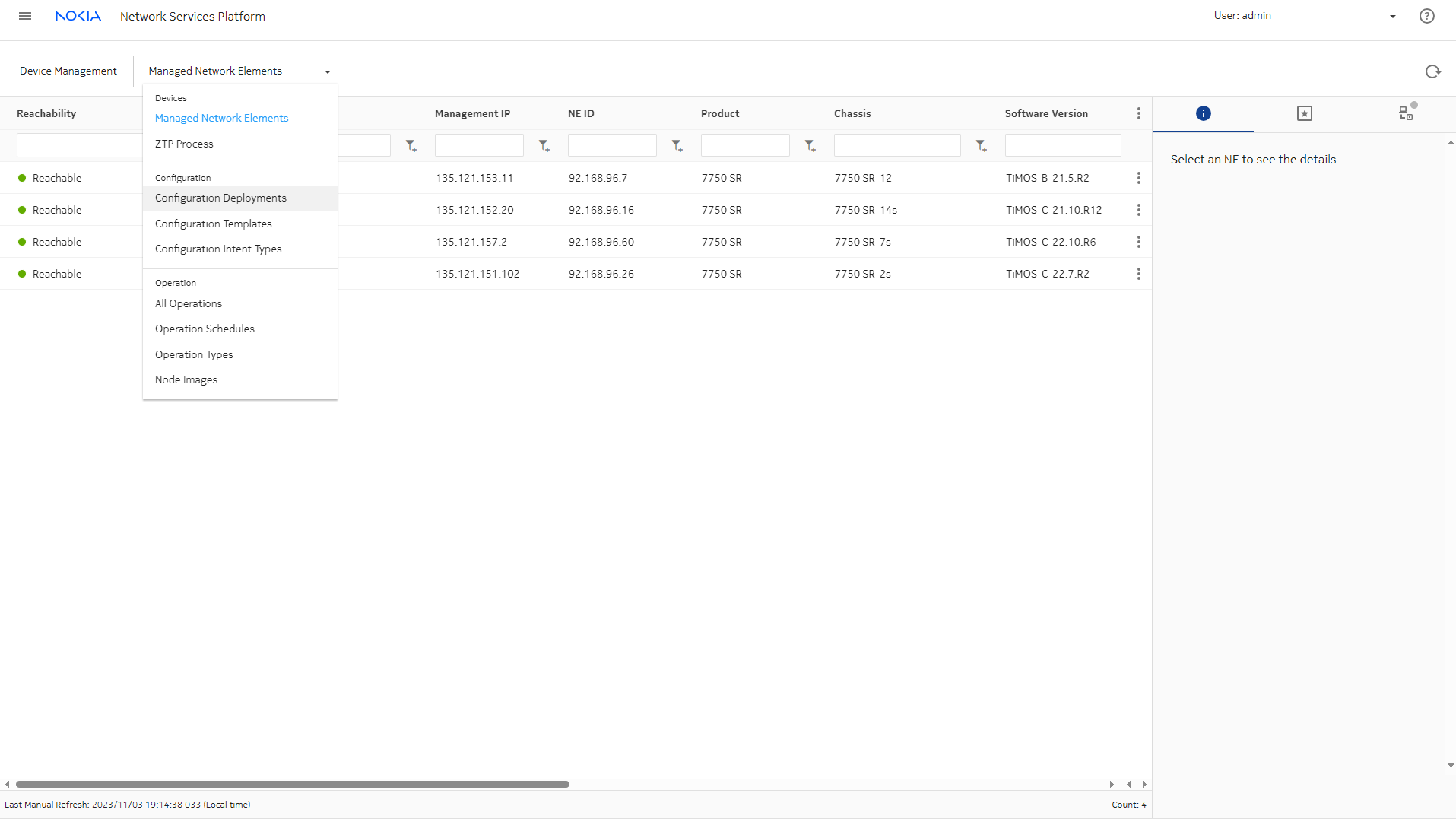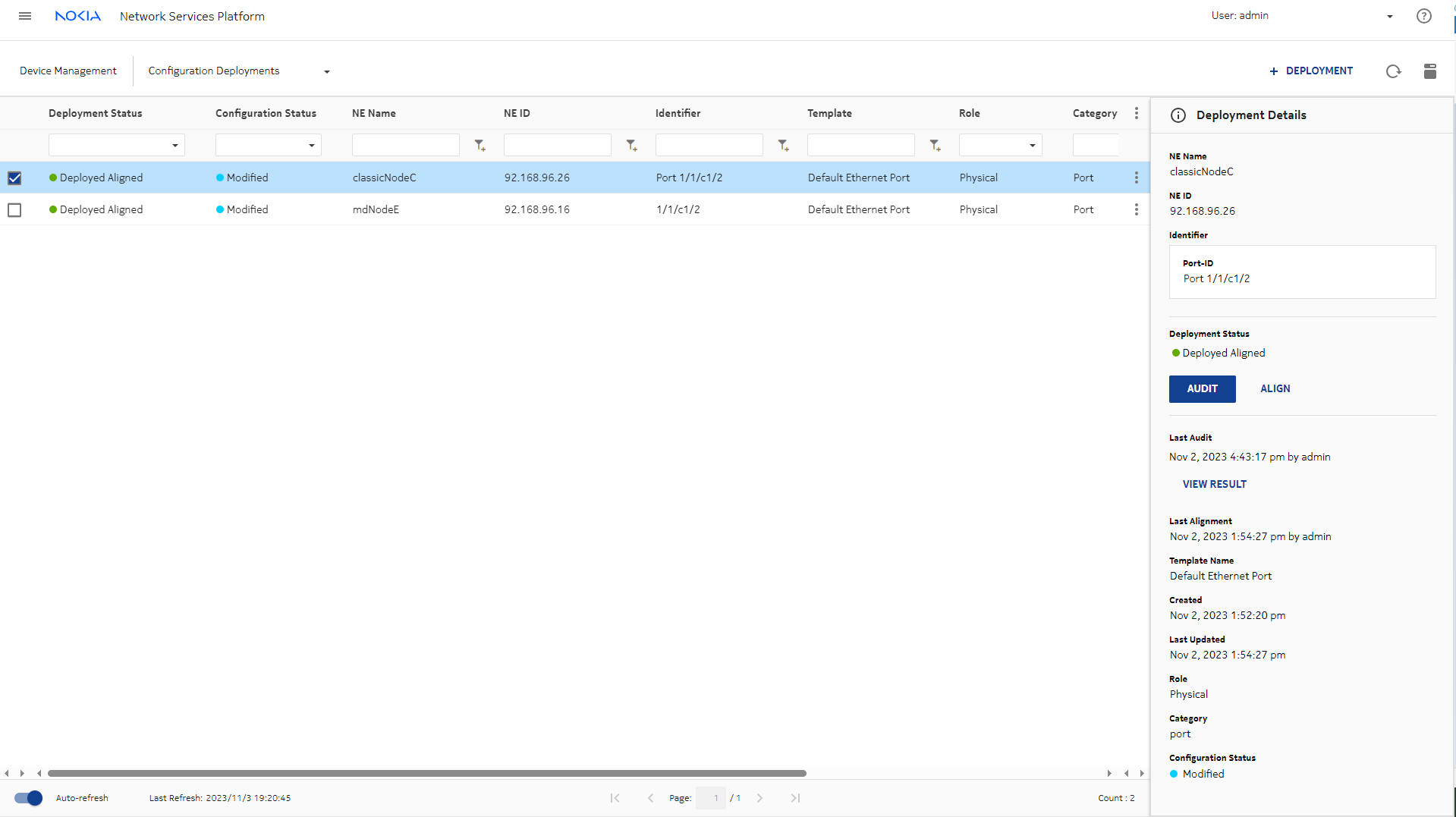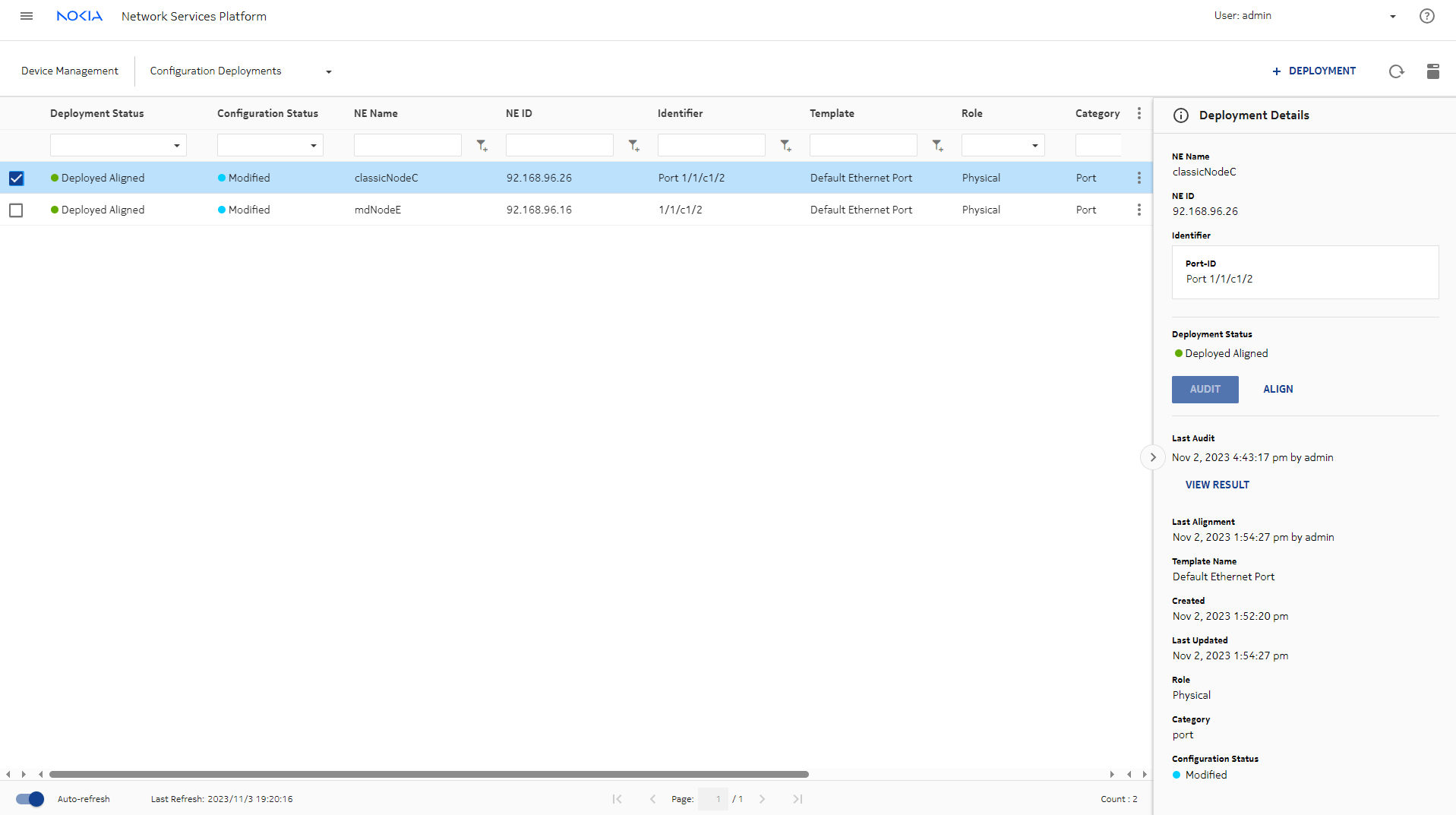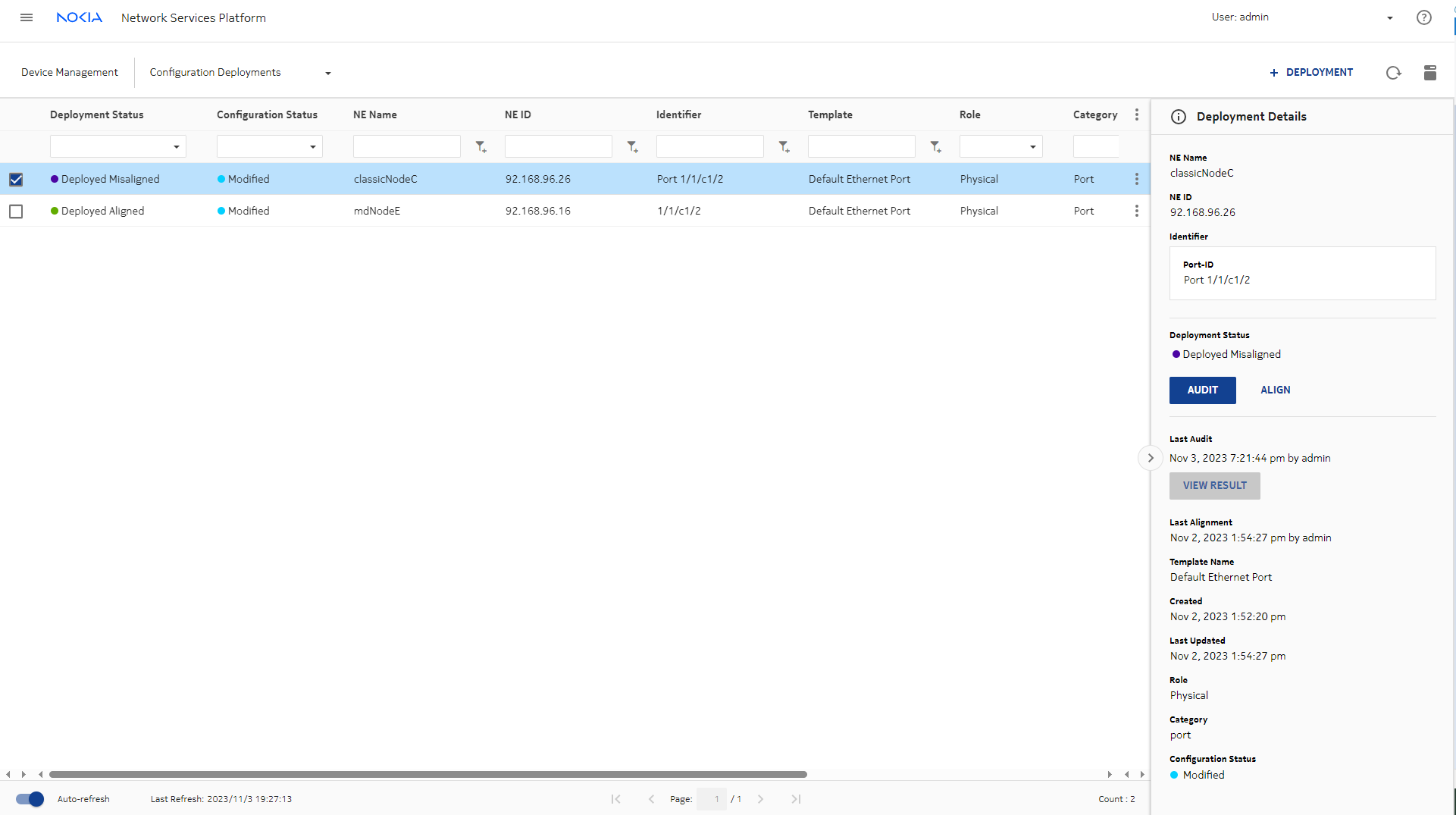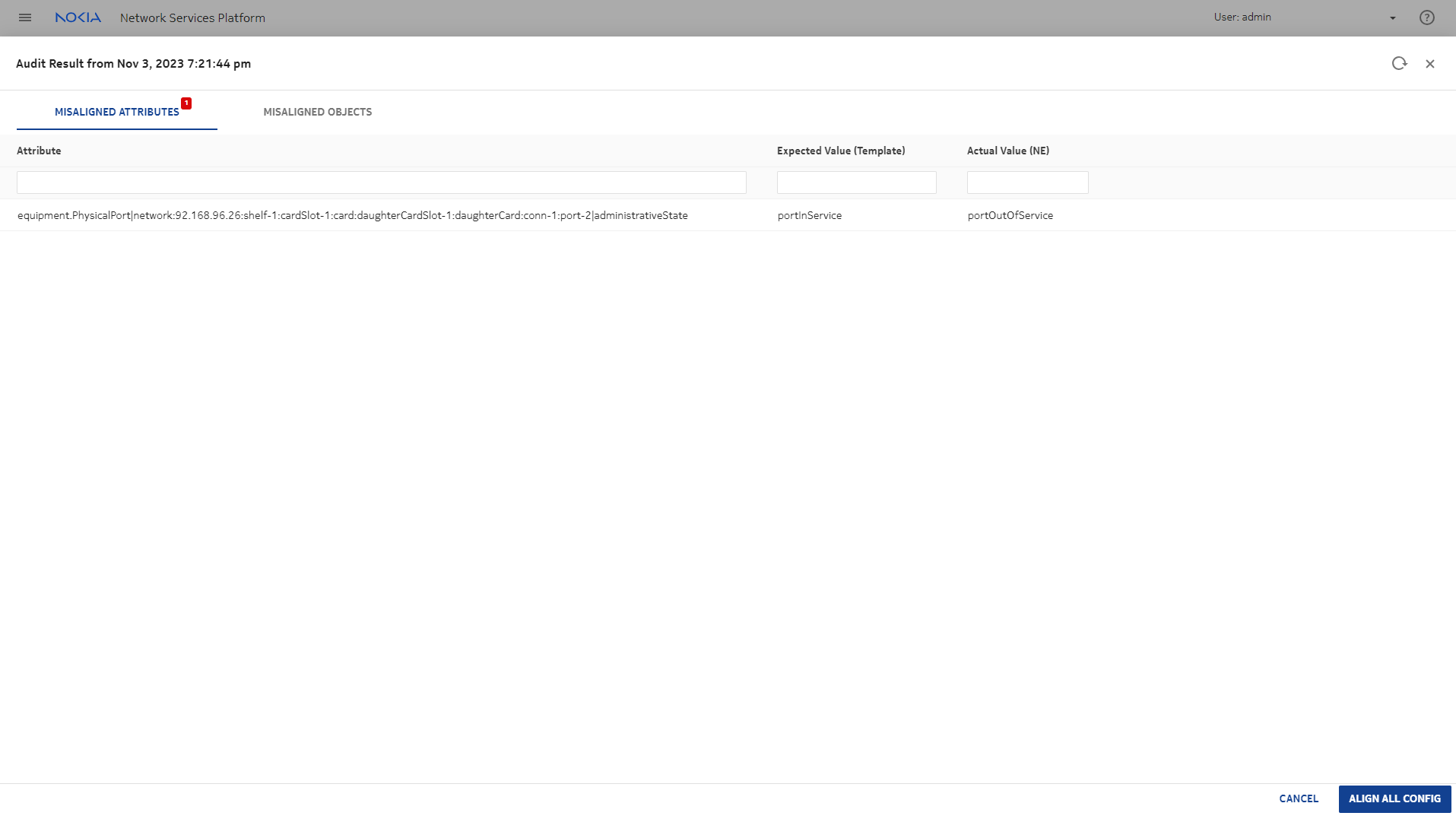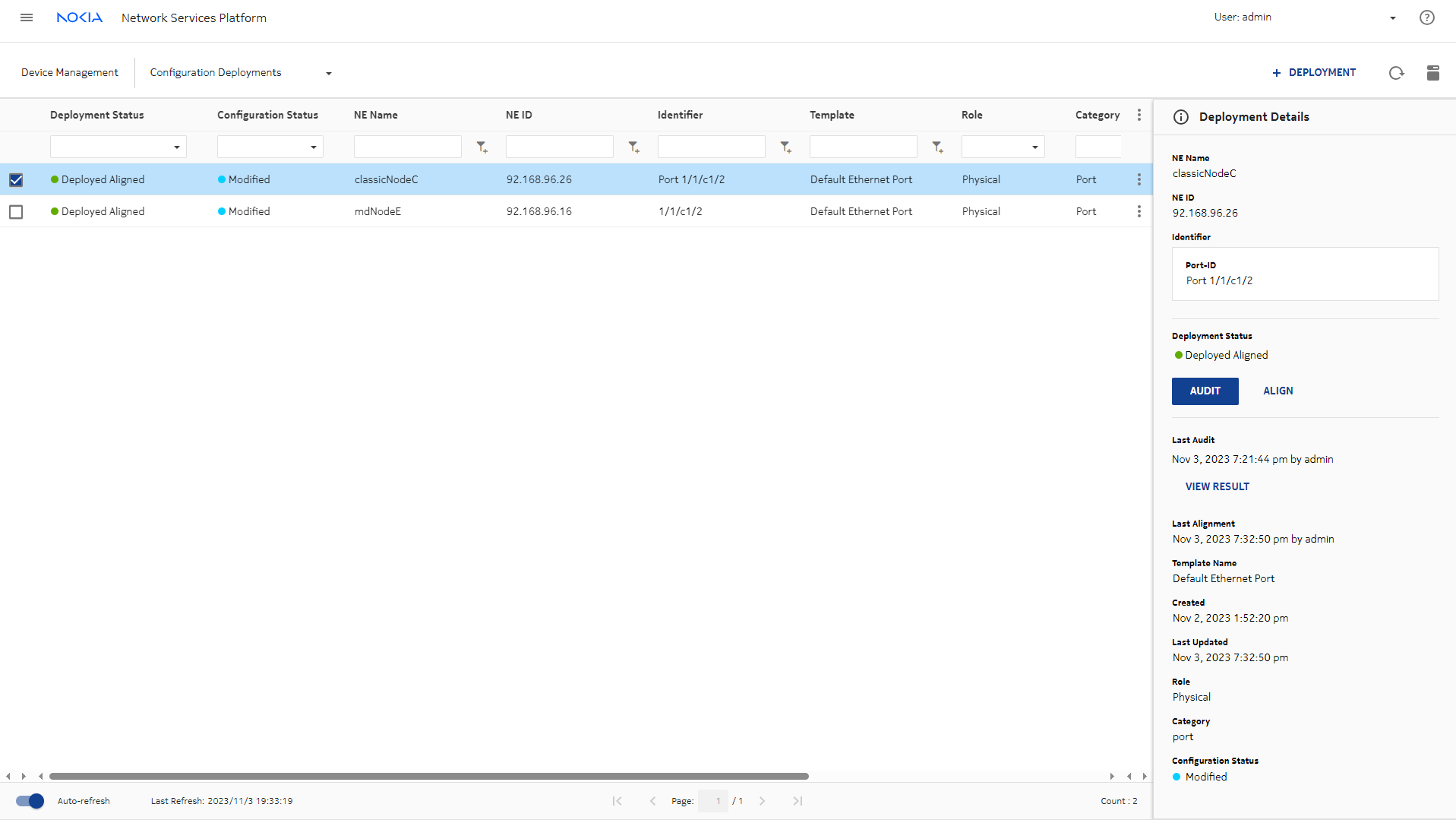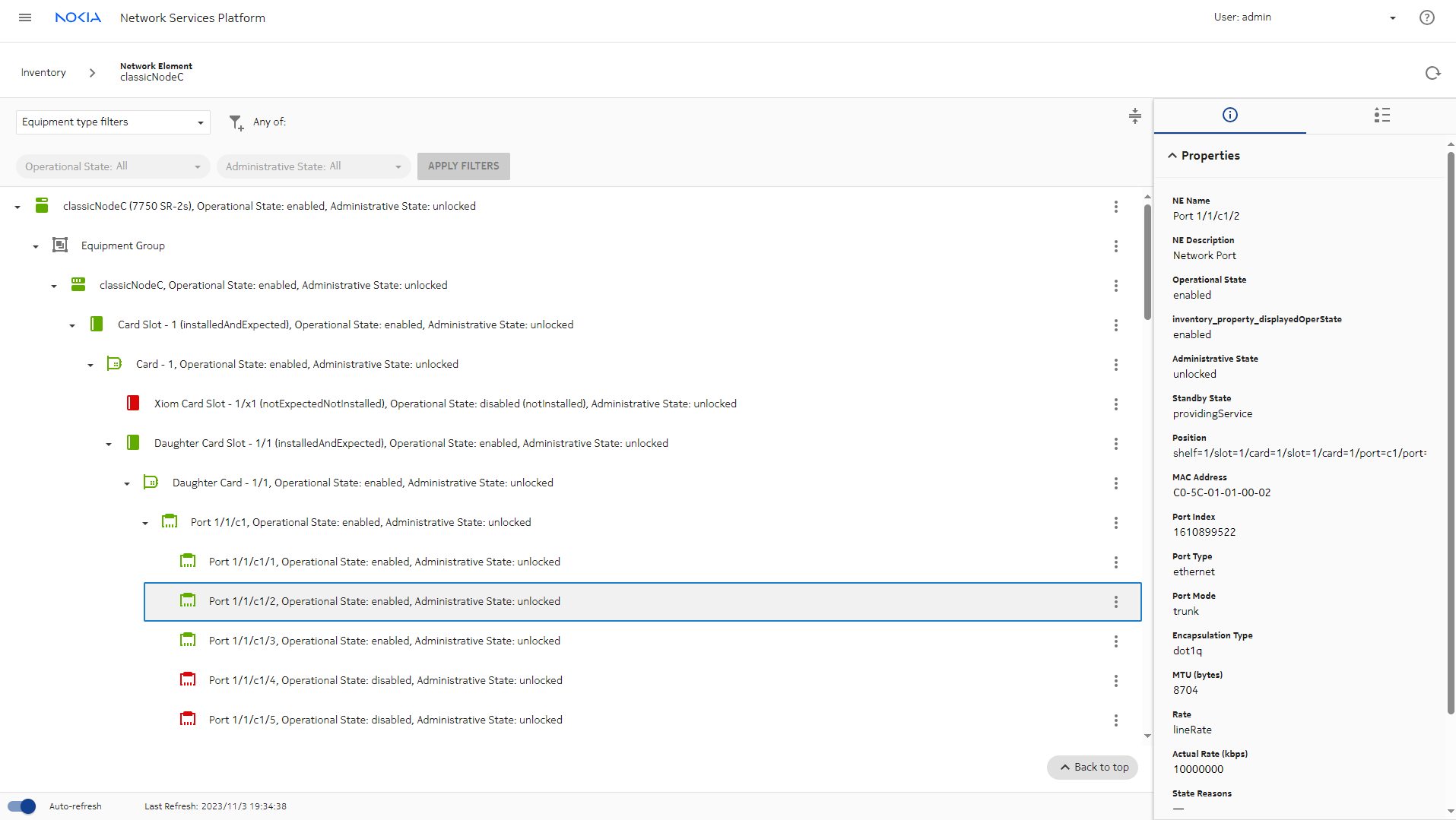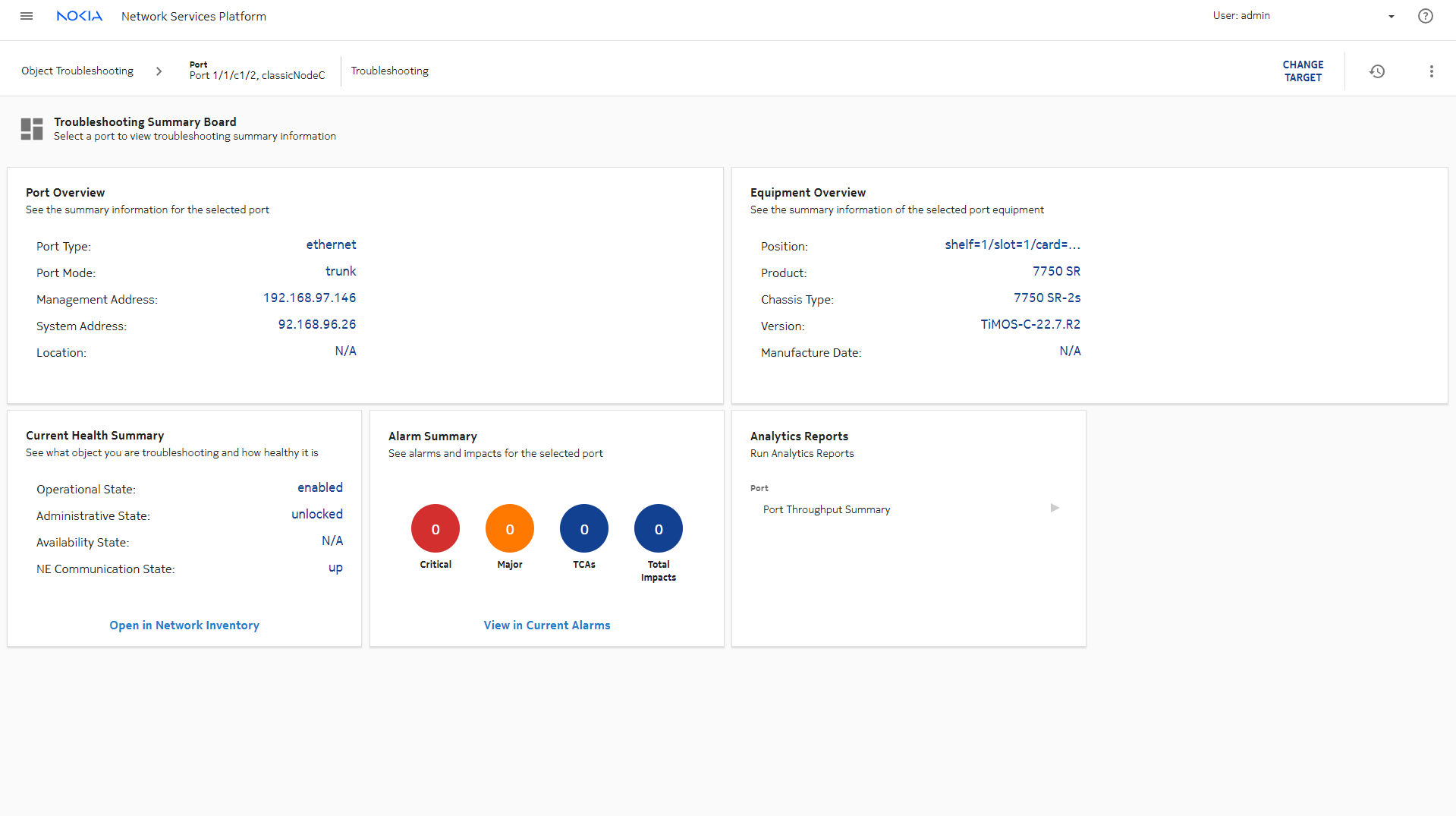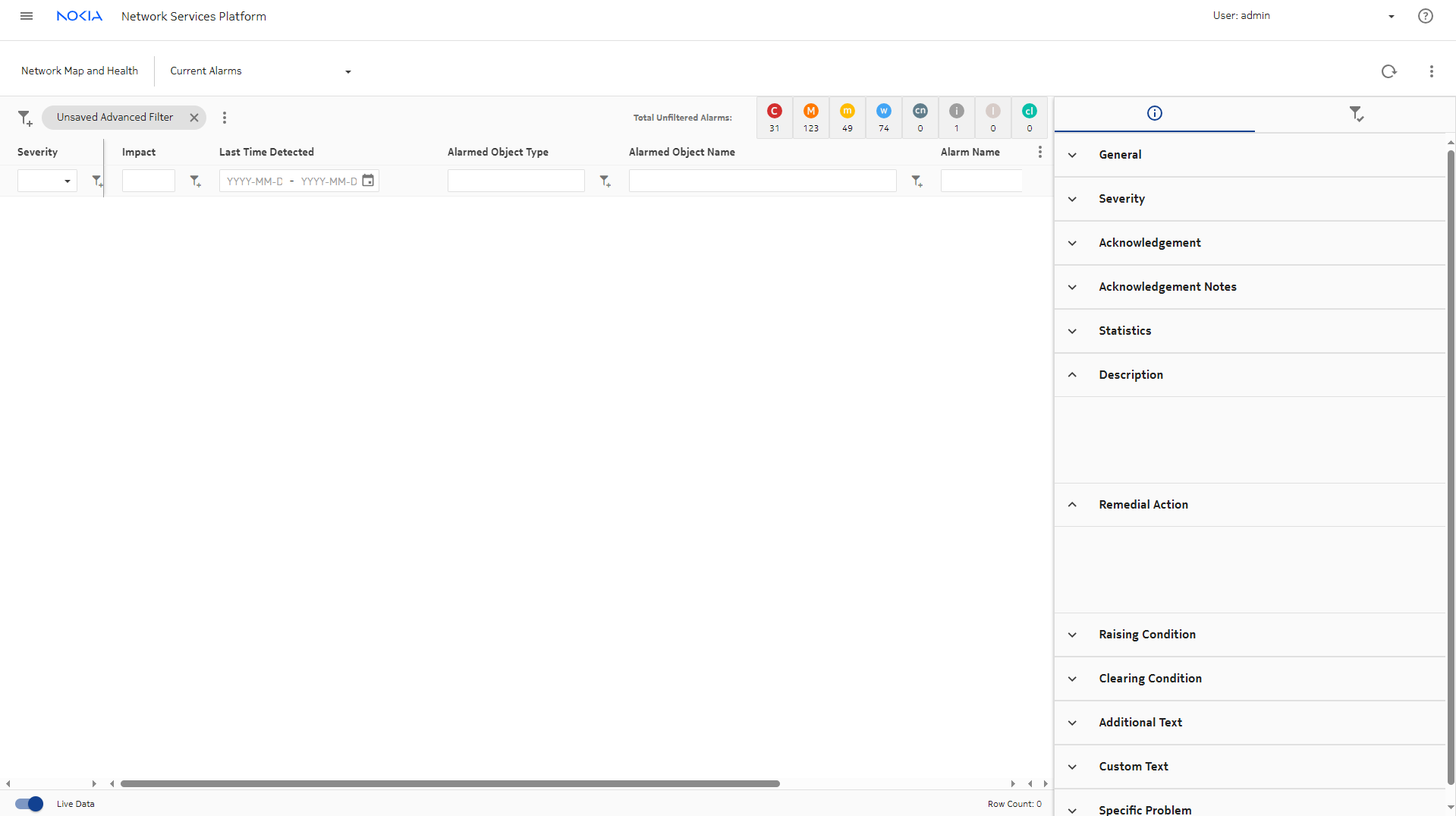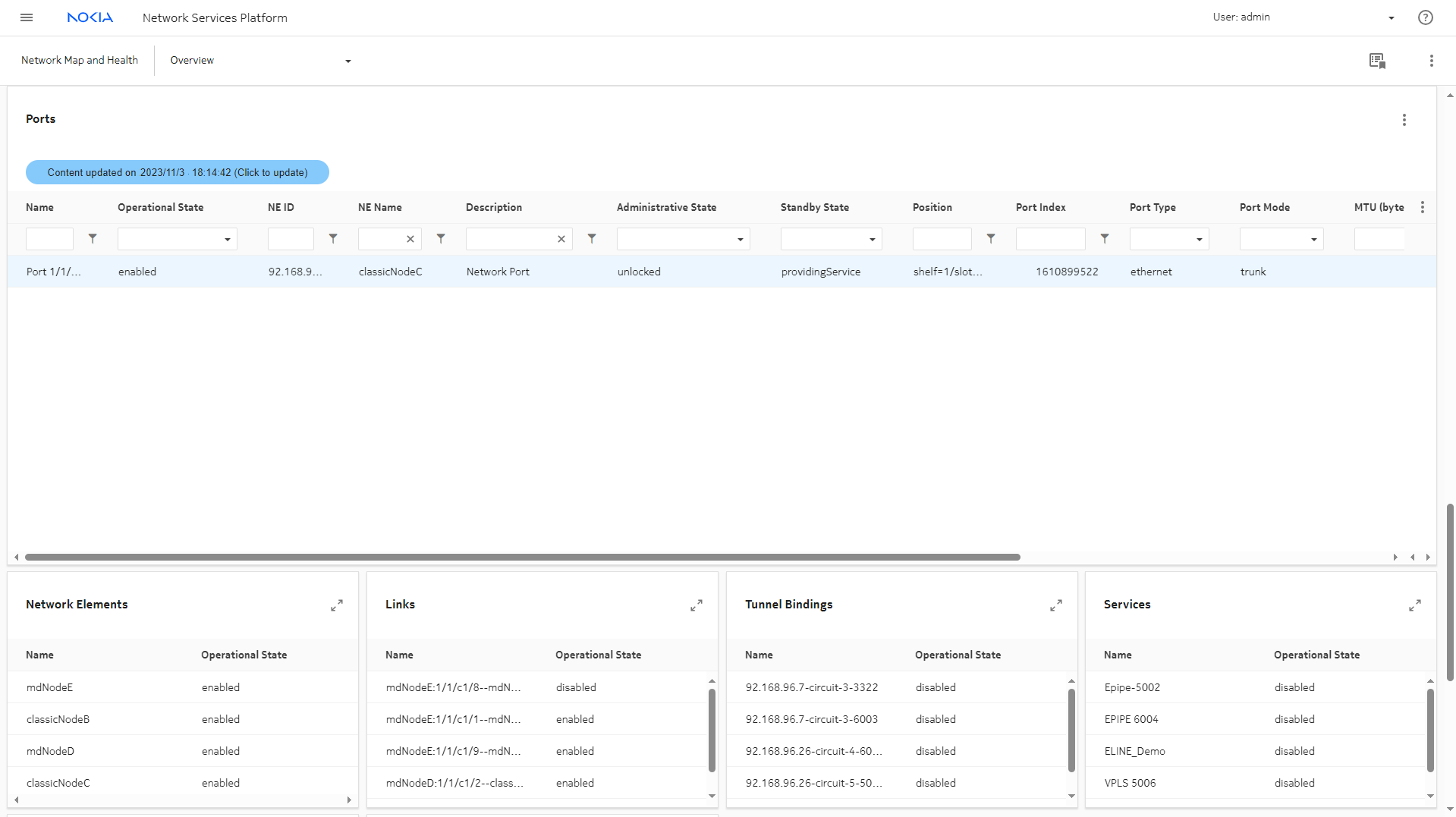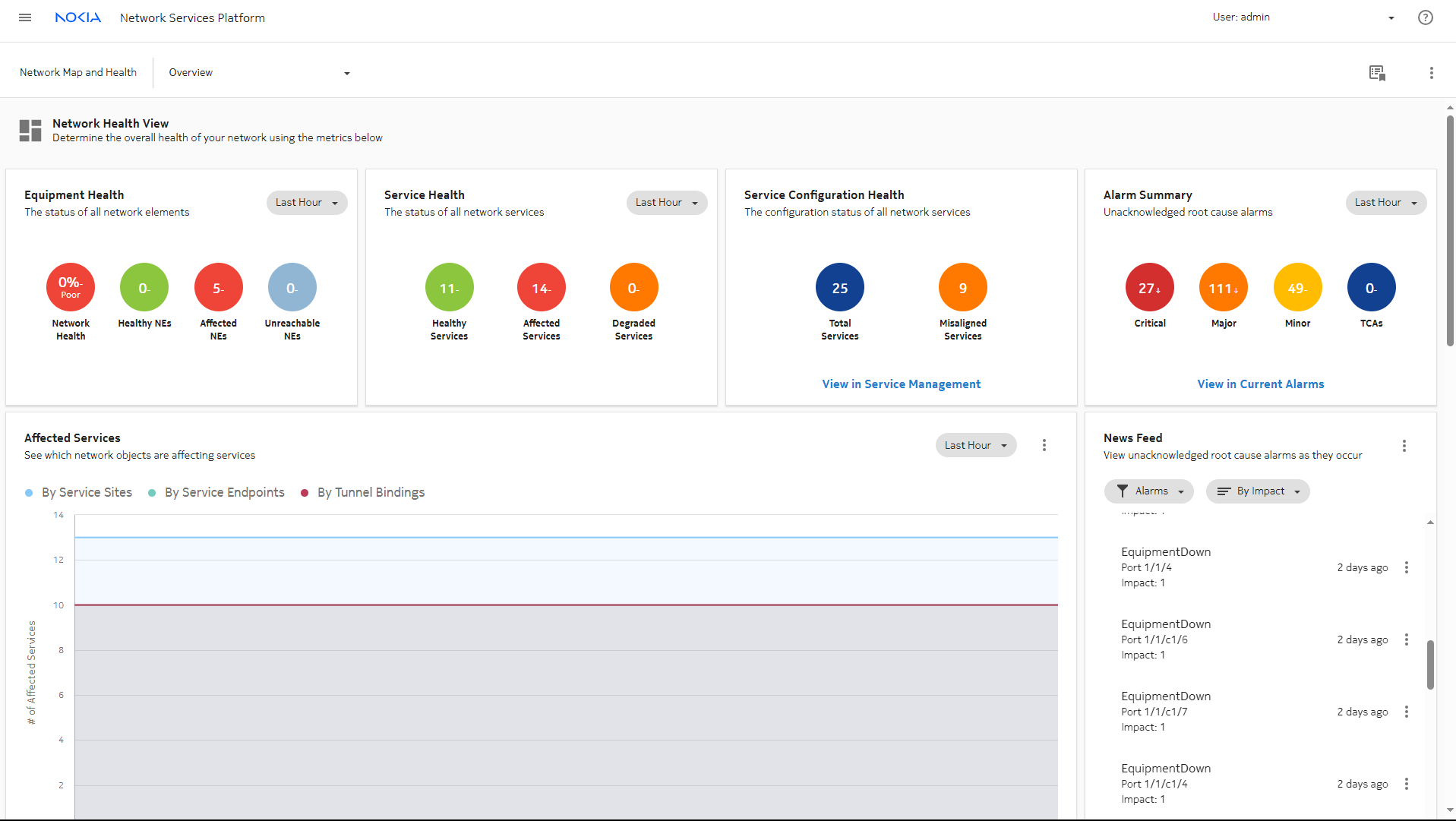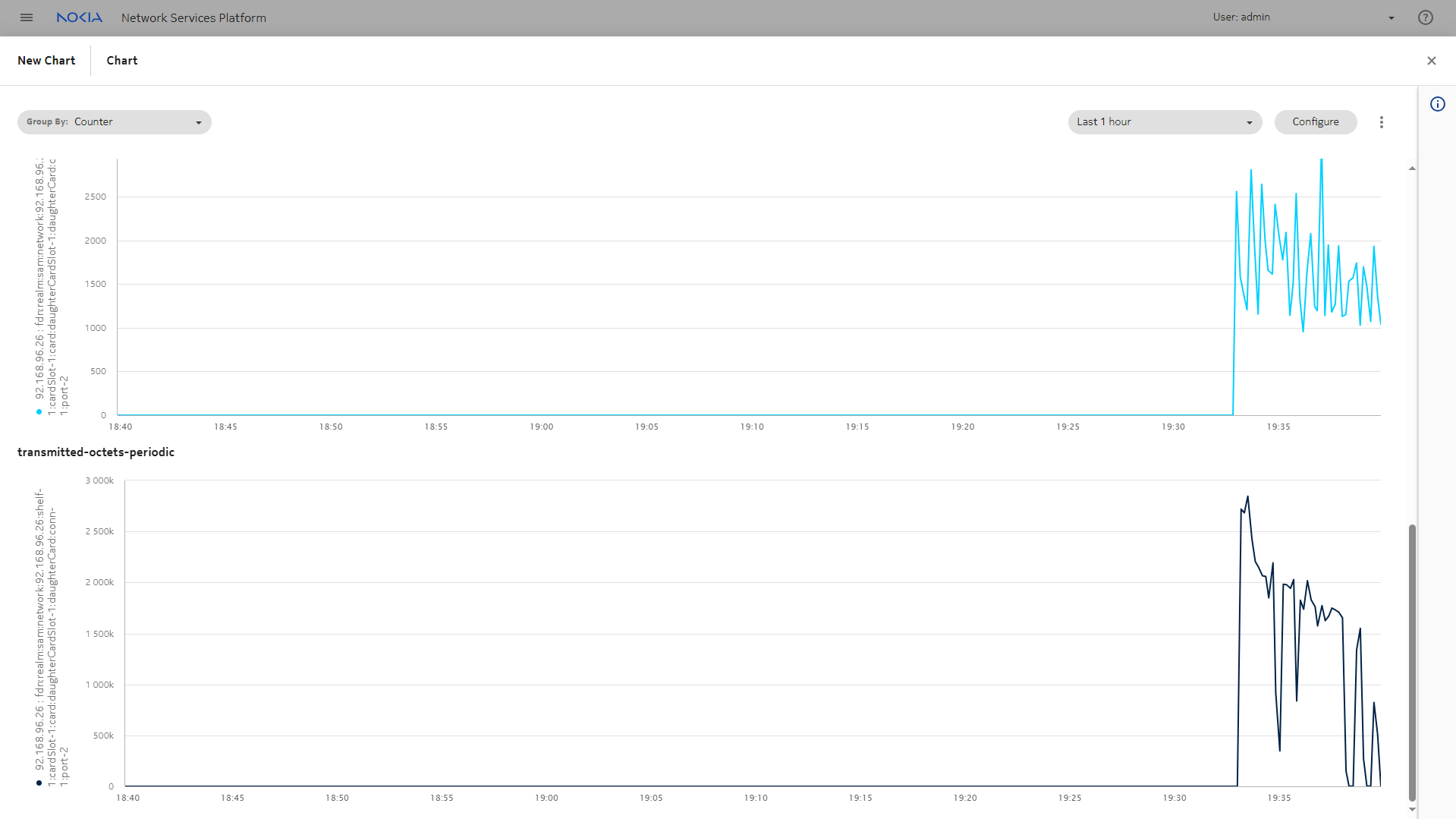End-to-end port troubleshooting scenario
Purpose
This process shows you how to use NSP in troubleshooting issues on ports.
In this scenario, a service has been affected or an alarm has come up. Investigation will show that the problem is due to a port issue.
View the Object Troubleshooting dashboard
Viewing a target in the Object Troubleshooting dashboard can help you see where else you can look to investigate a problem.
View the News Feed
Another starting point could be the News Feed in the Network Map and Health dashboard. The News Feed provides a live feed of unacknowledged root cause alarms as they occur in real time. Alarm severity and number of impacts are displayed, and cross launch is available depending on the alarm.
1 |
The News Feed shows a Equipment Down alarm on a port. Select the alarm and choose View in Current Alarms from the More menu. Current Alarms opens, showing the current alarm. |
Investigate from the Ports data page
Viewing the port in the Ports list on the Network Map and Health Dashboard will show us some configuration and state details.
